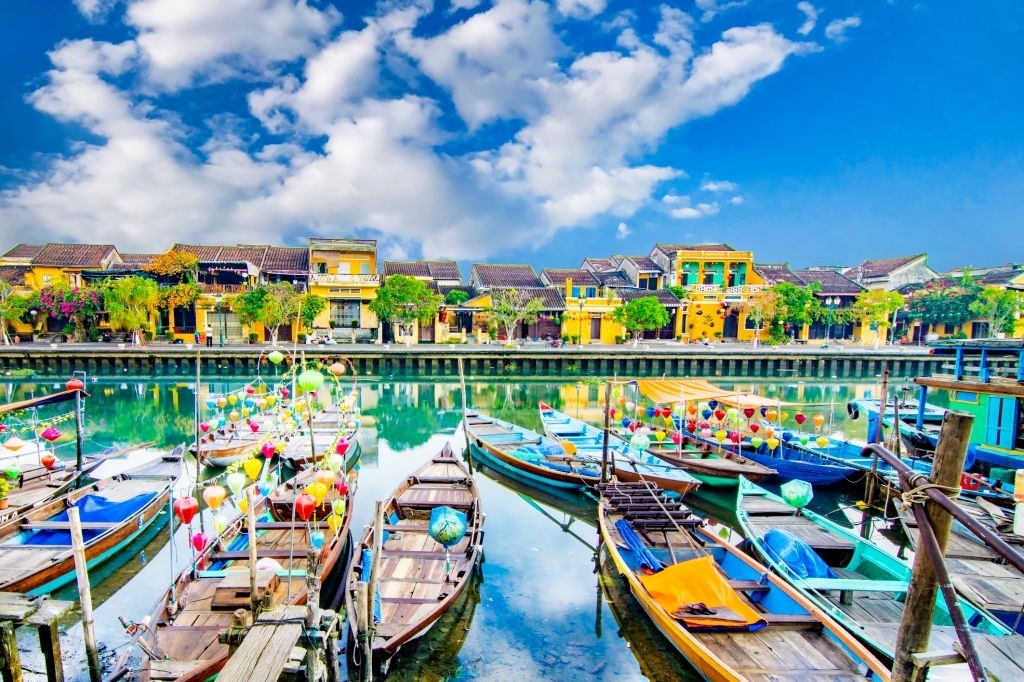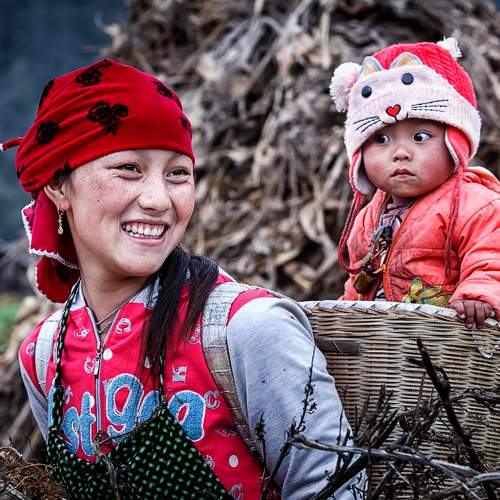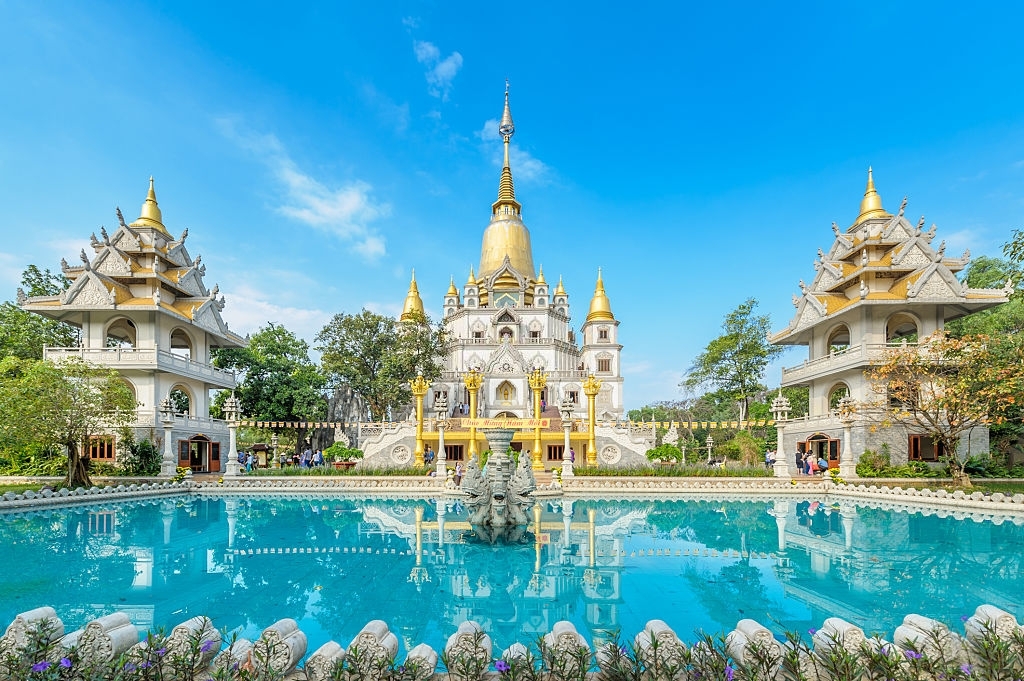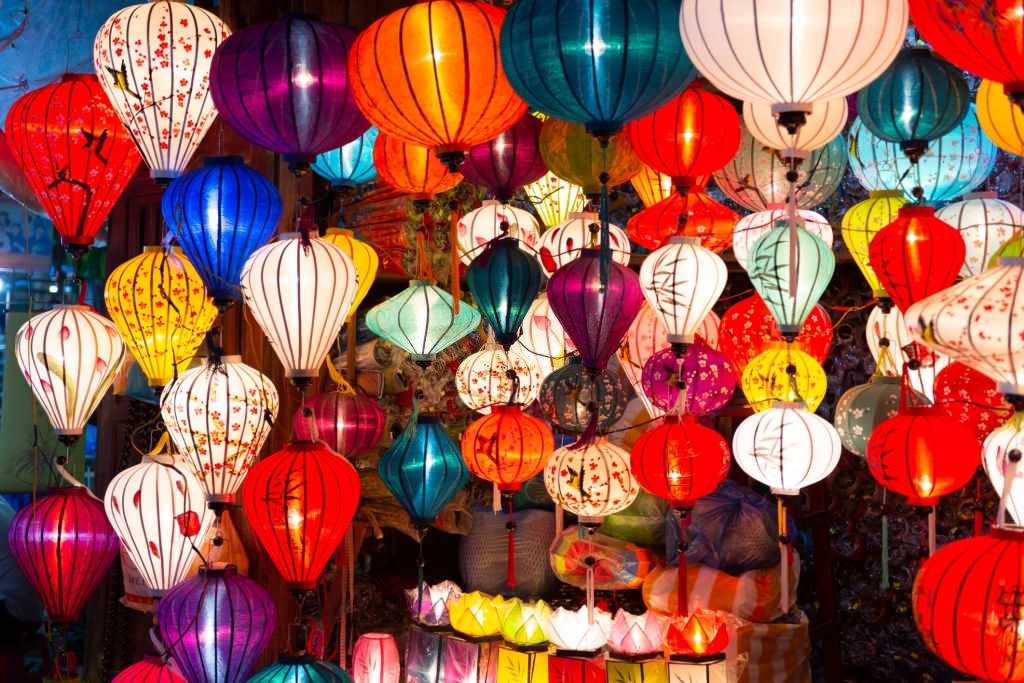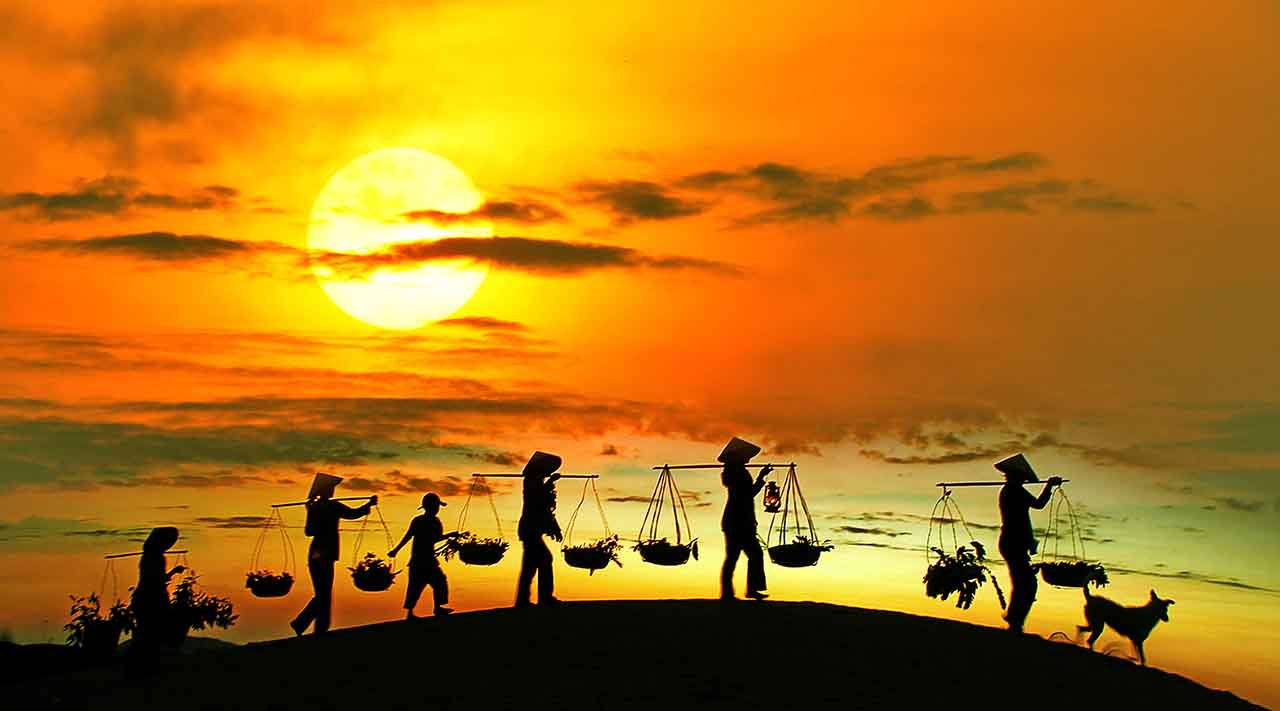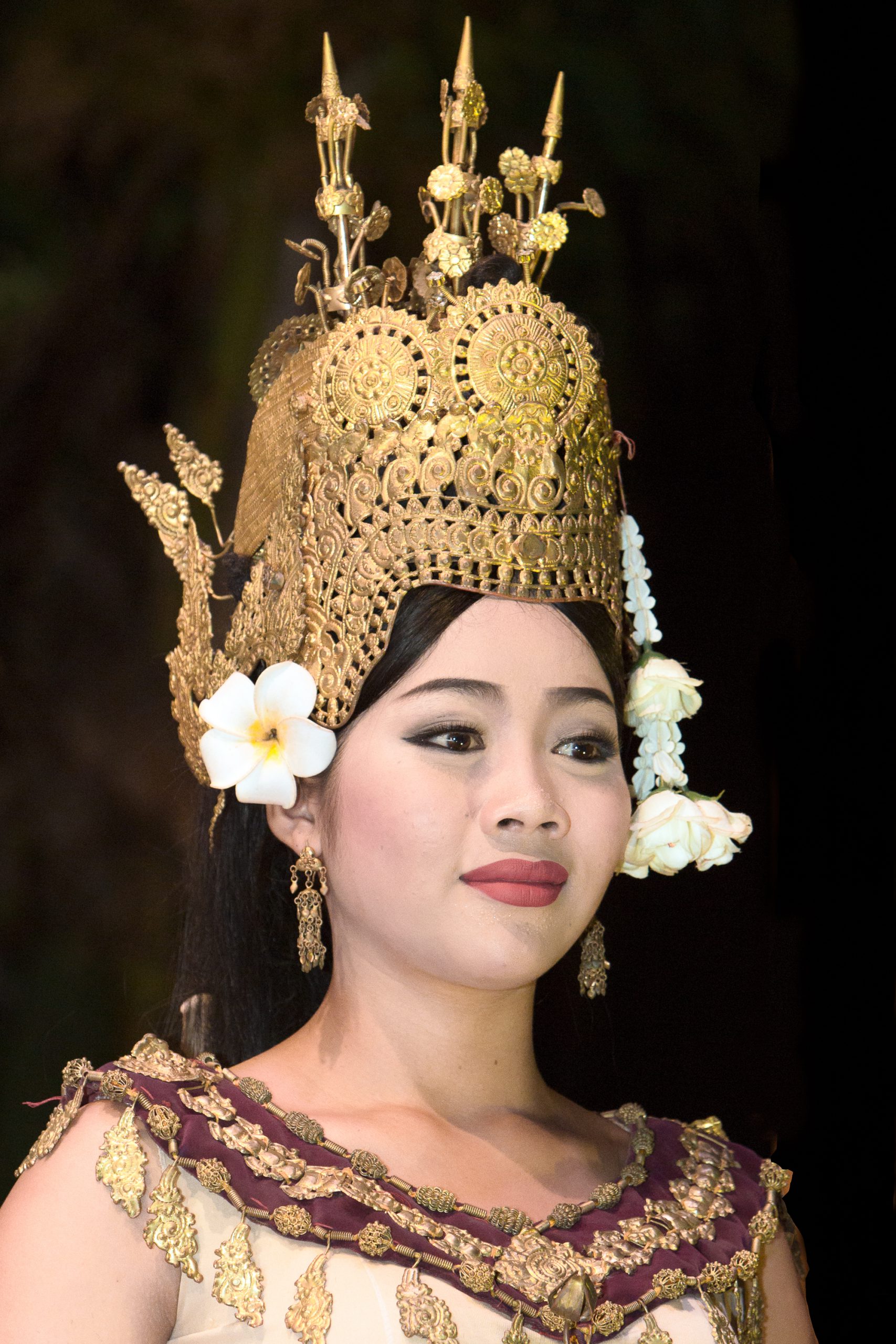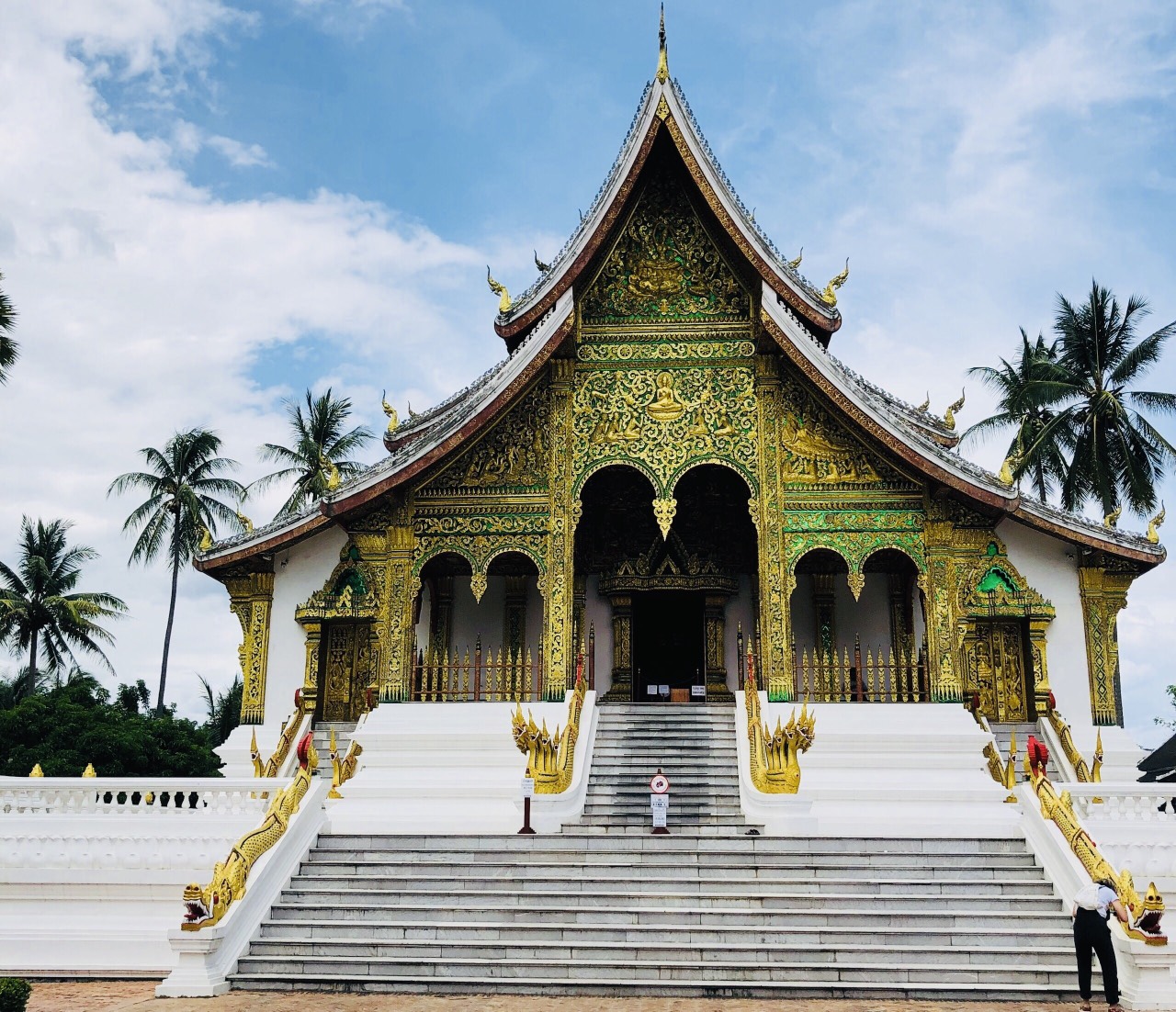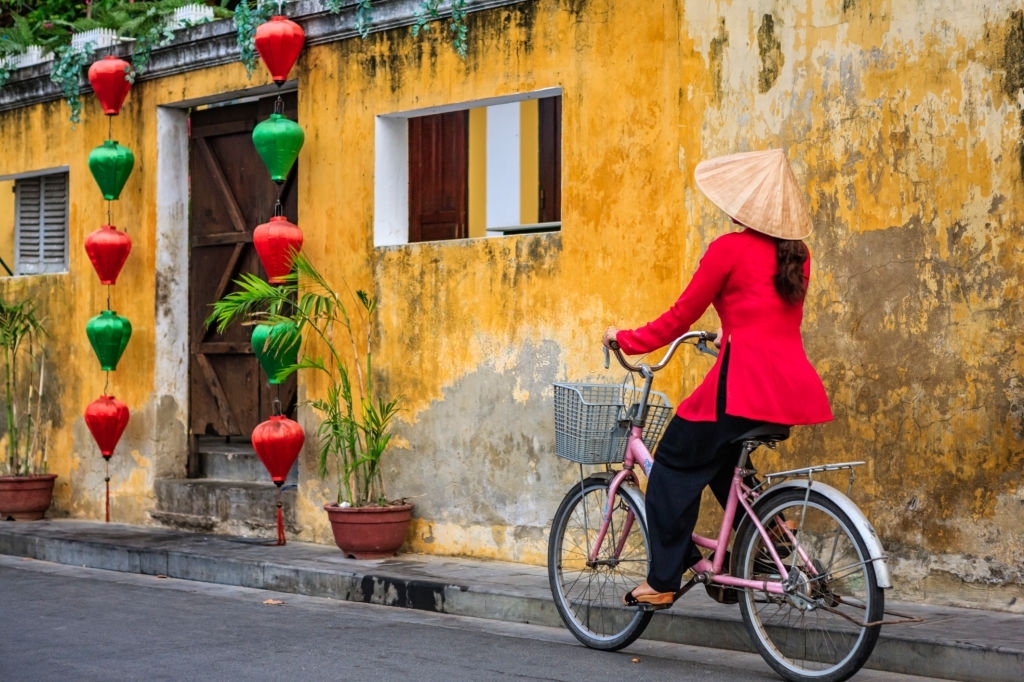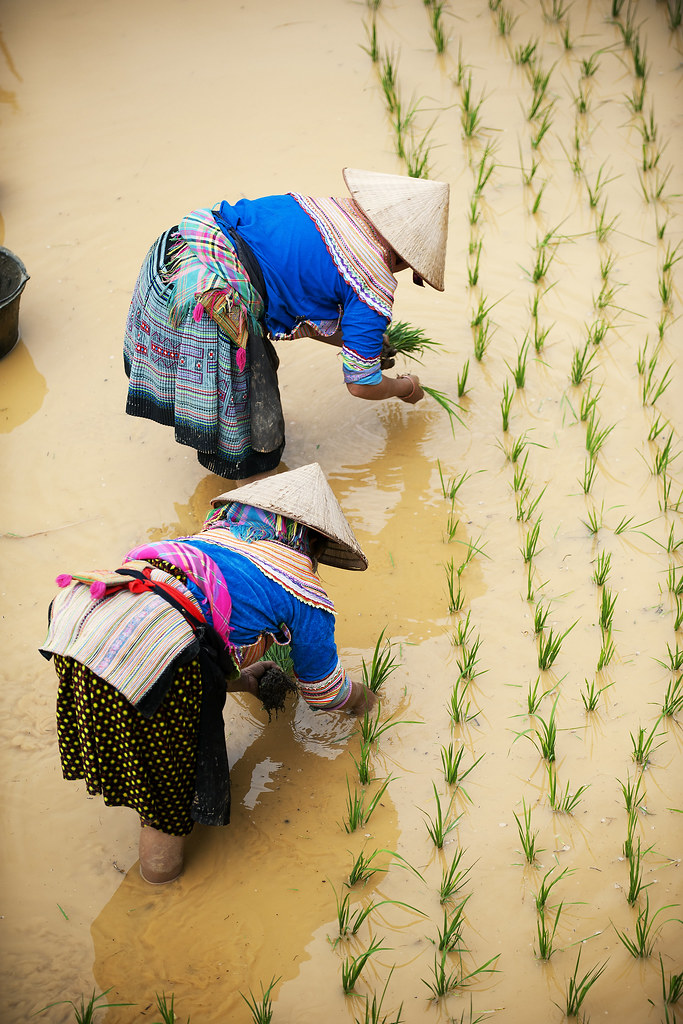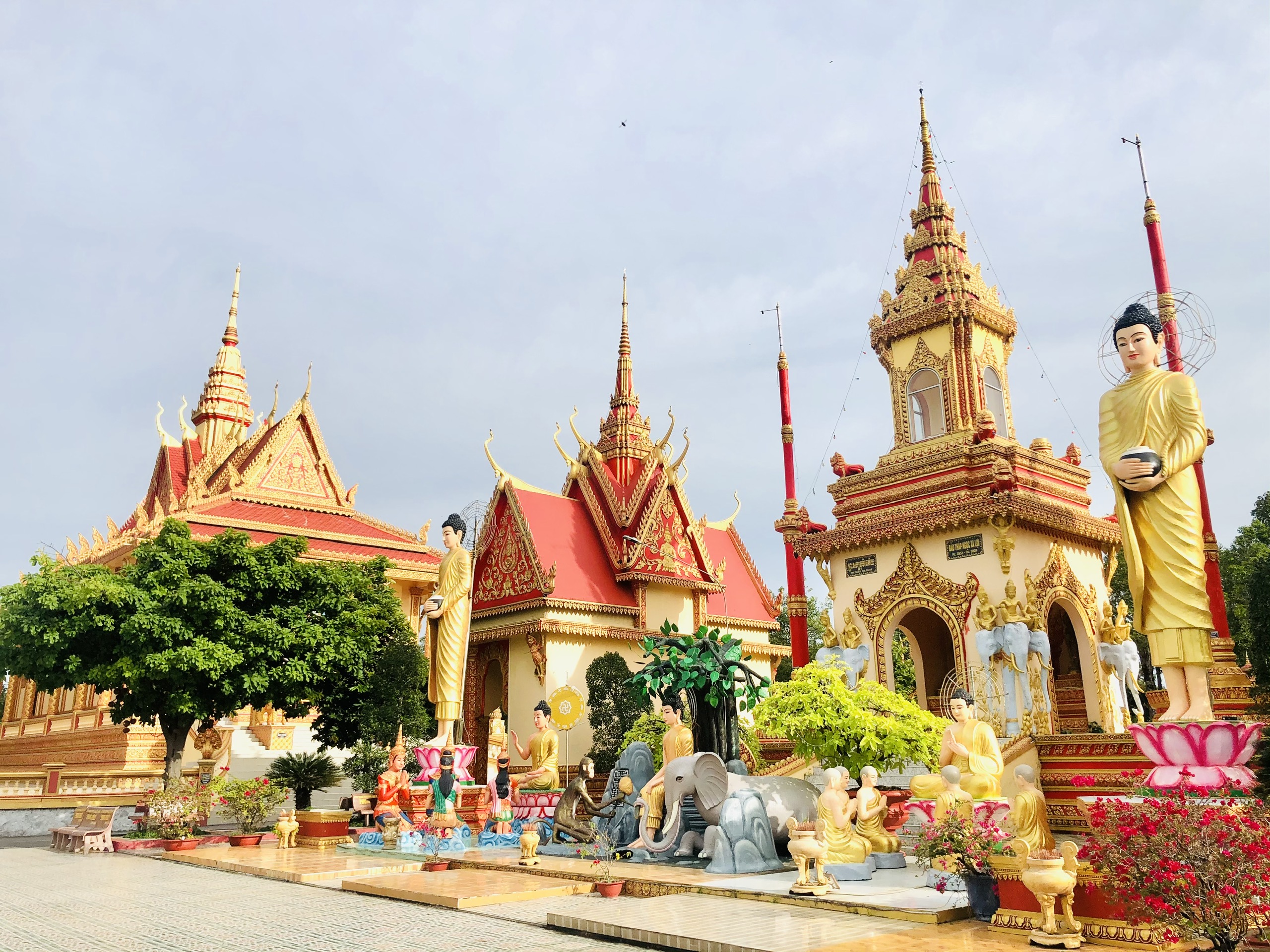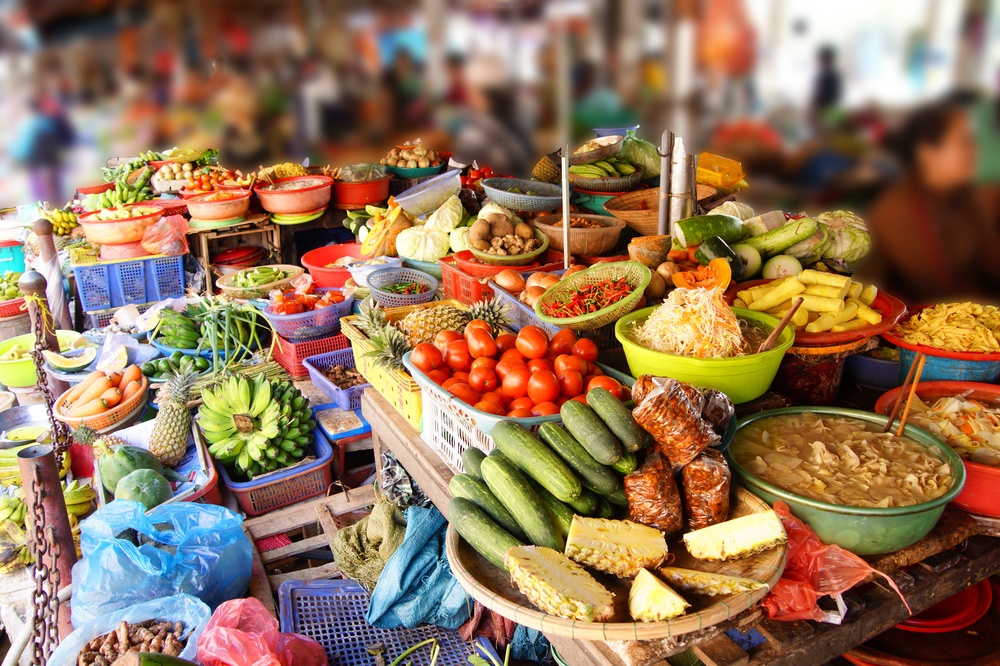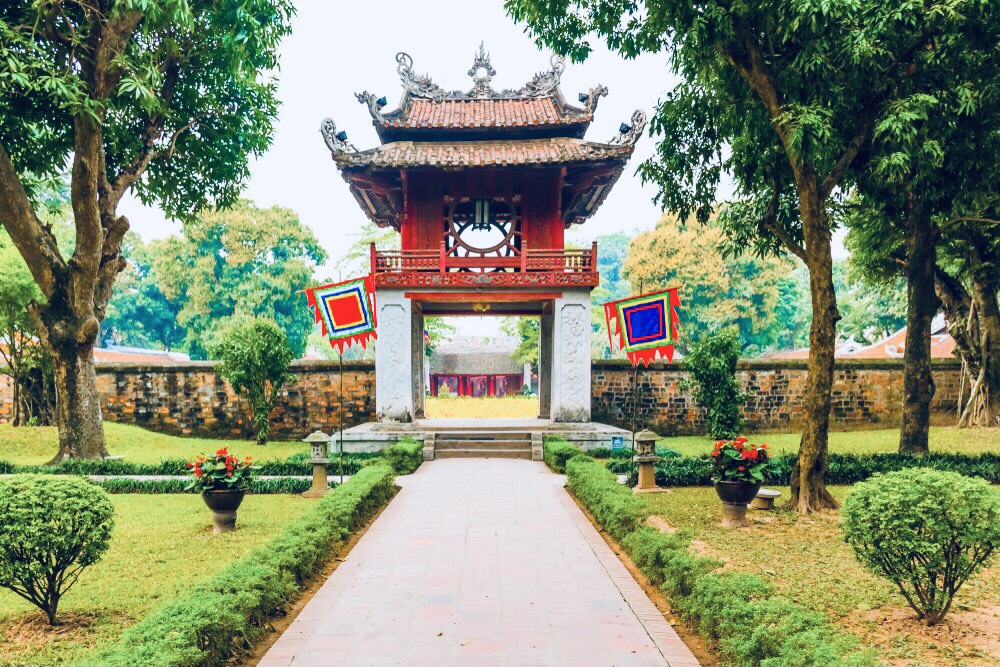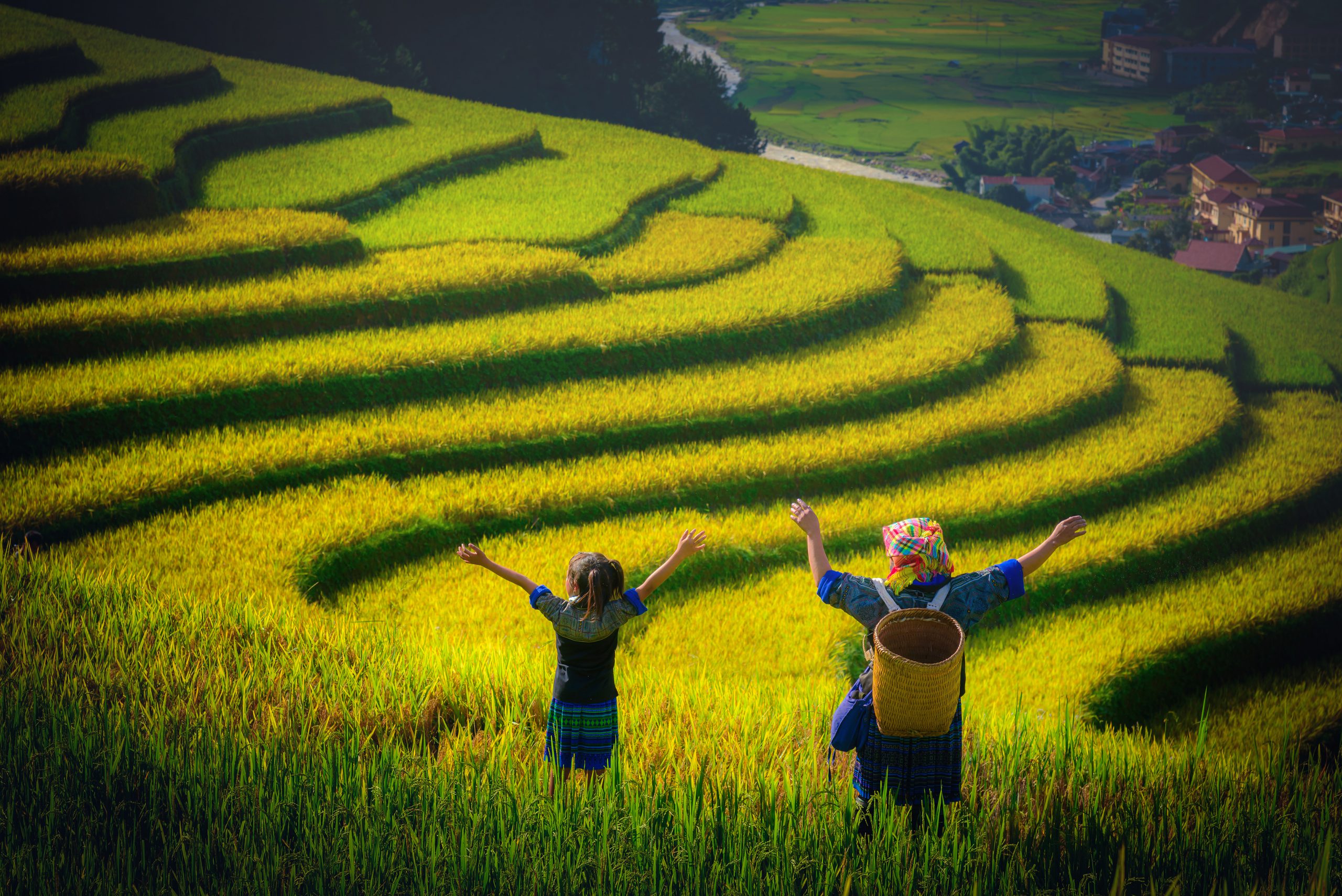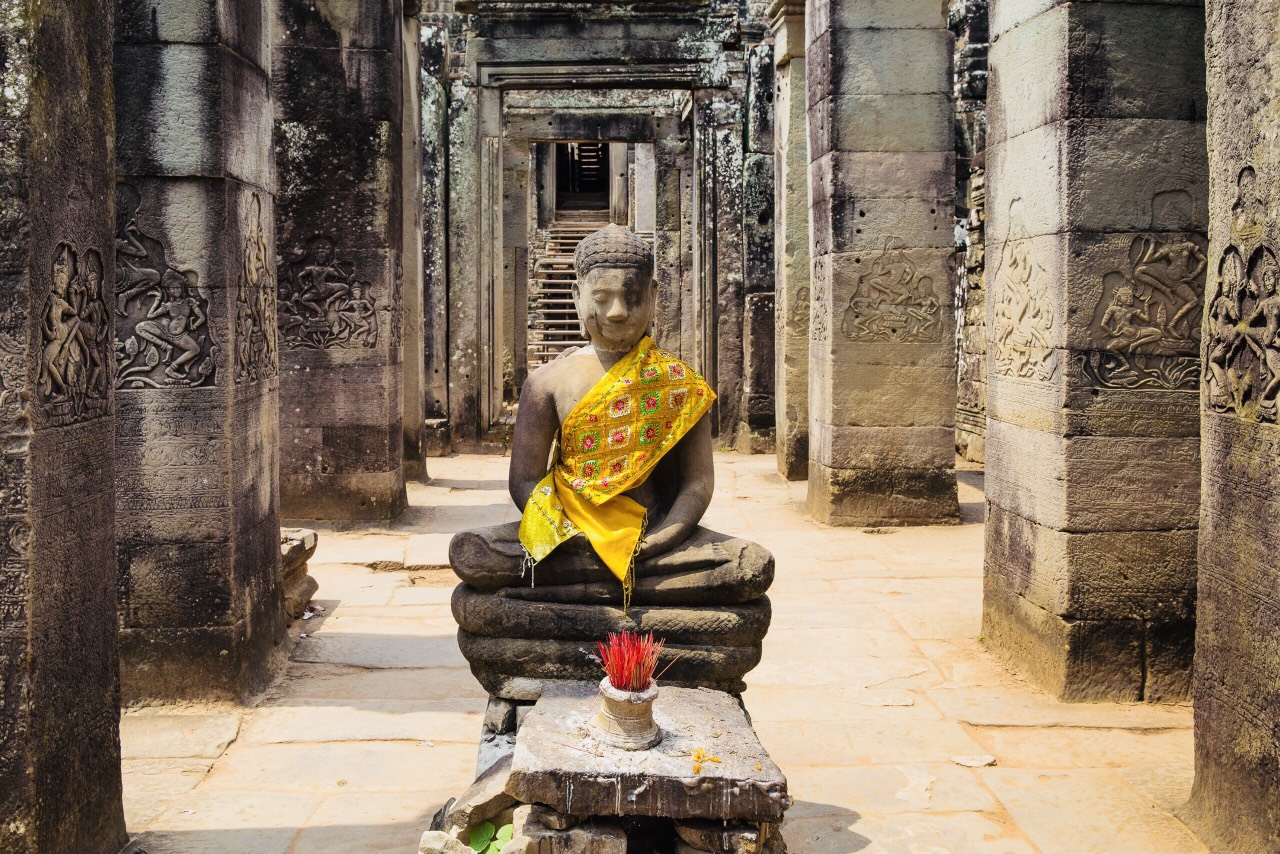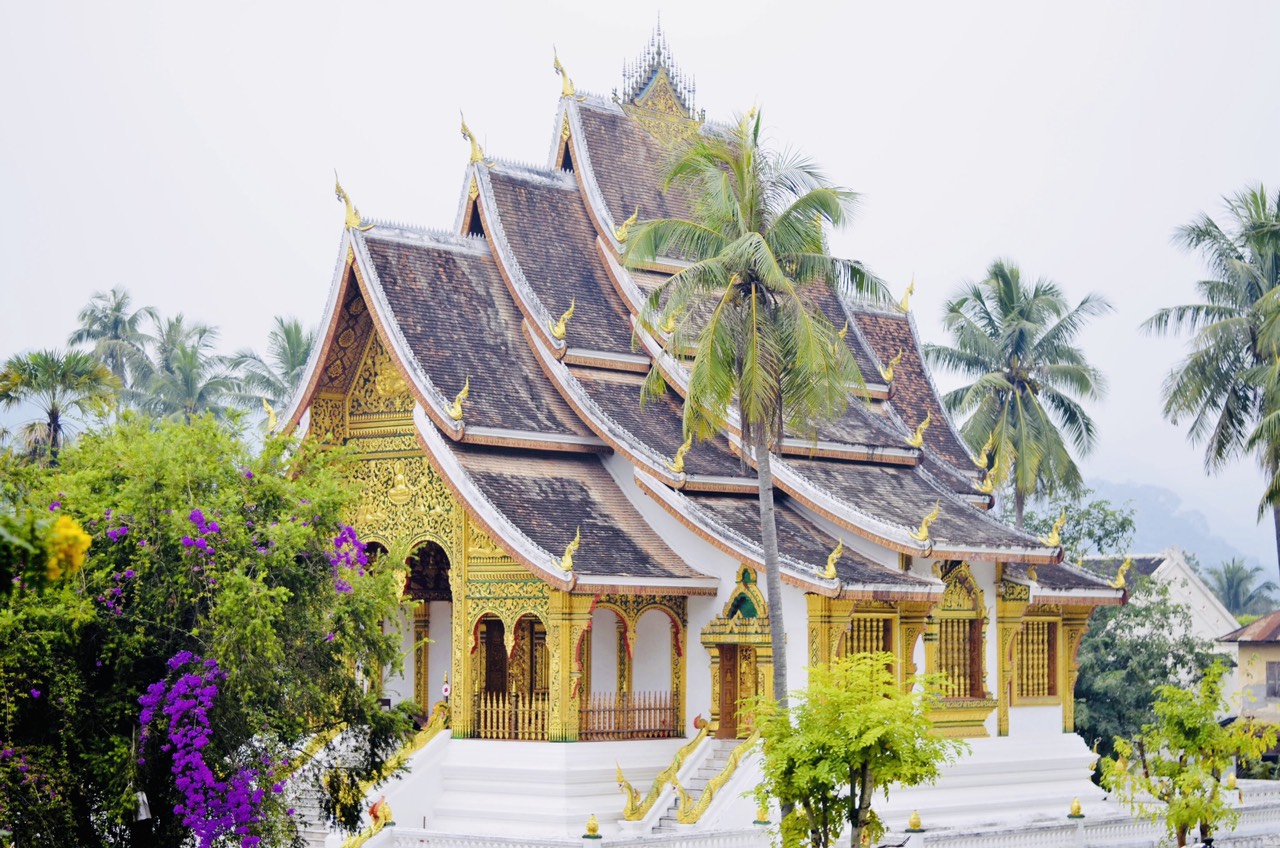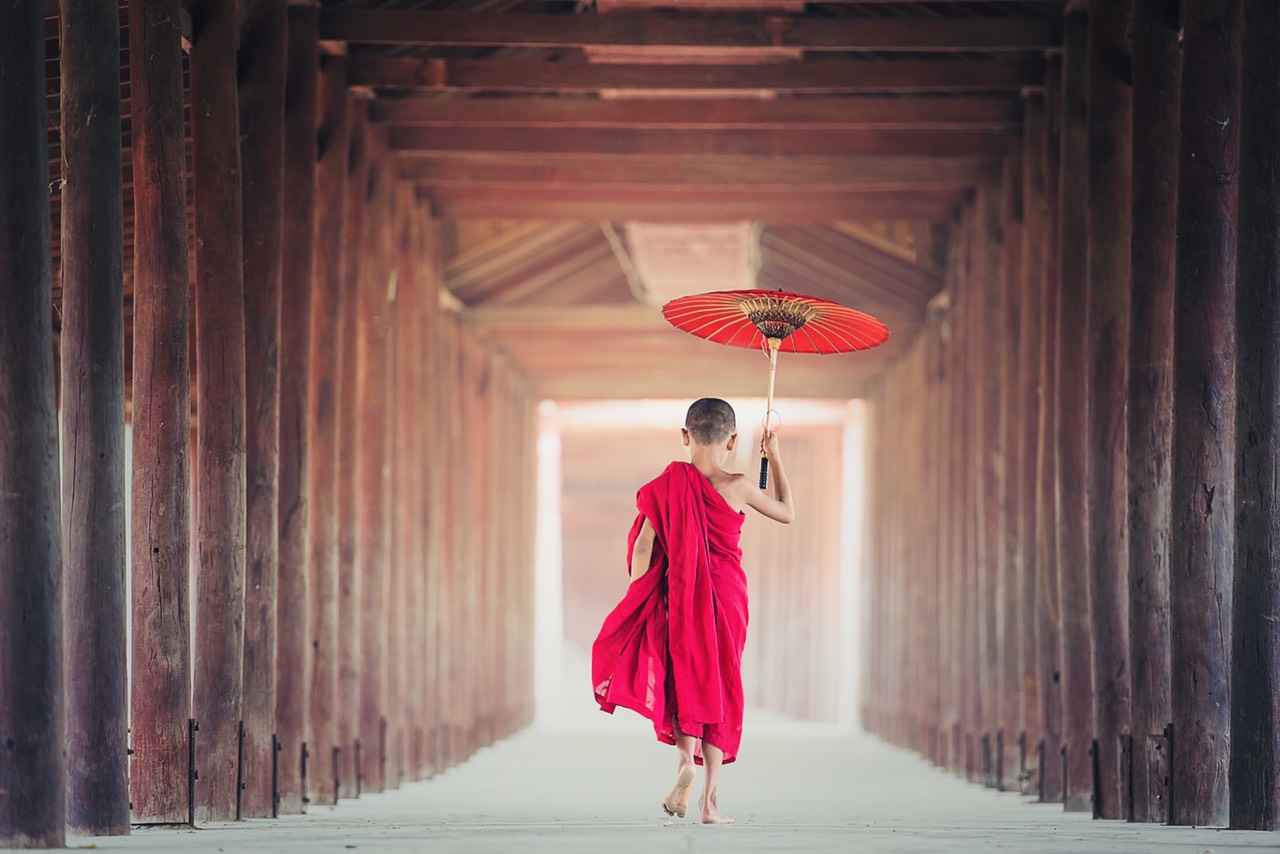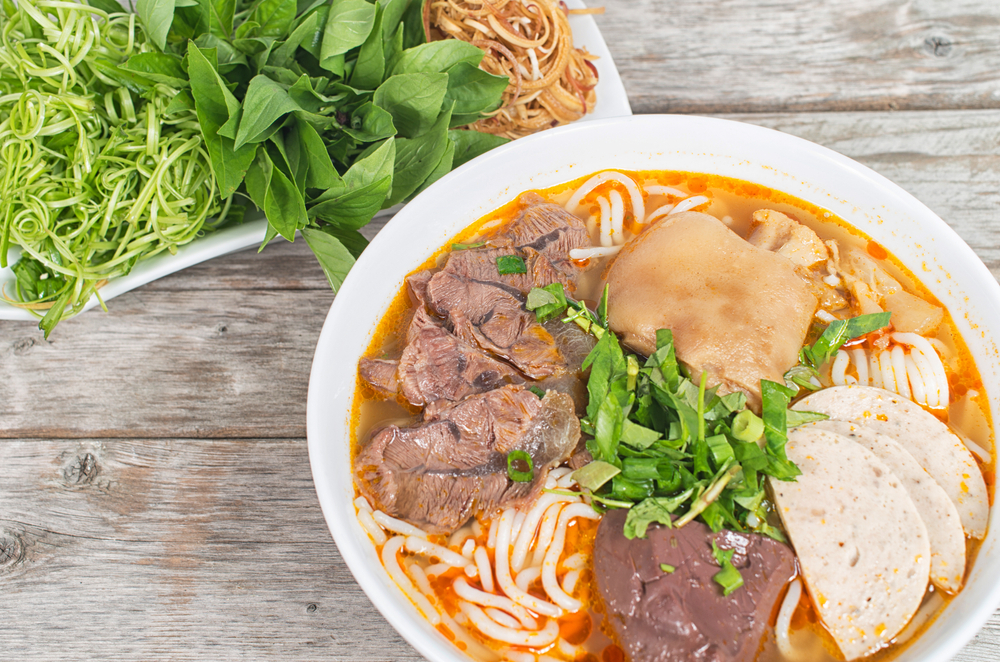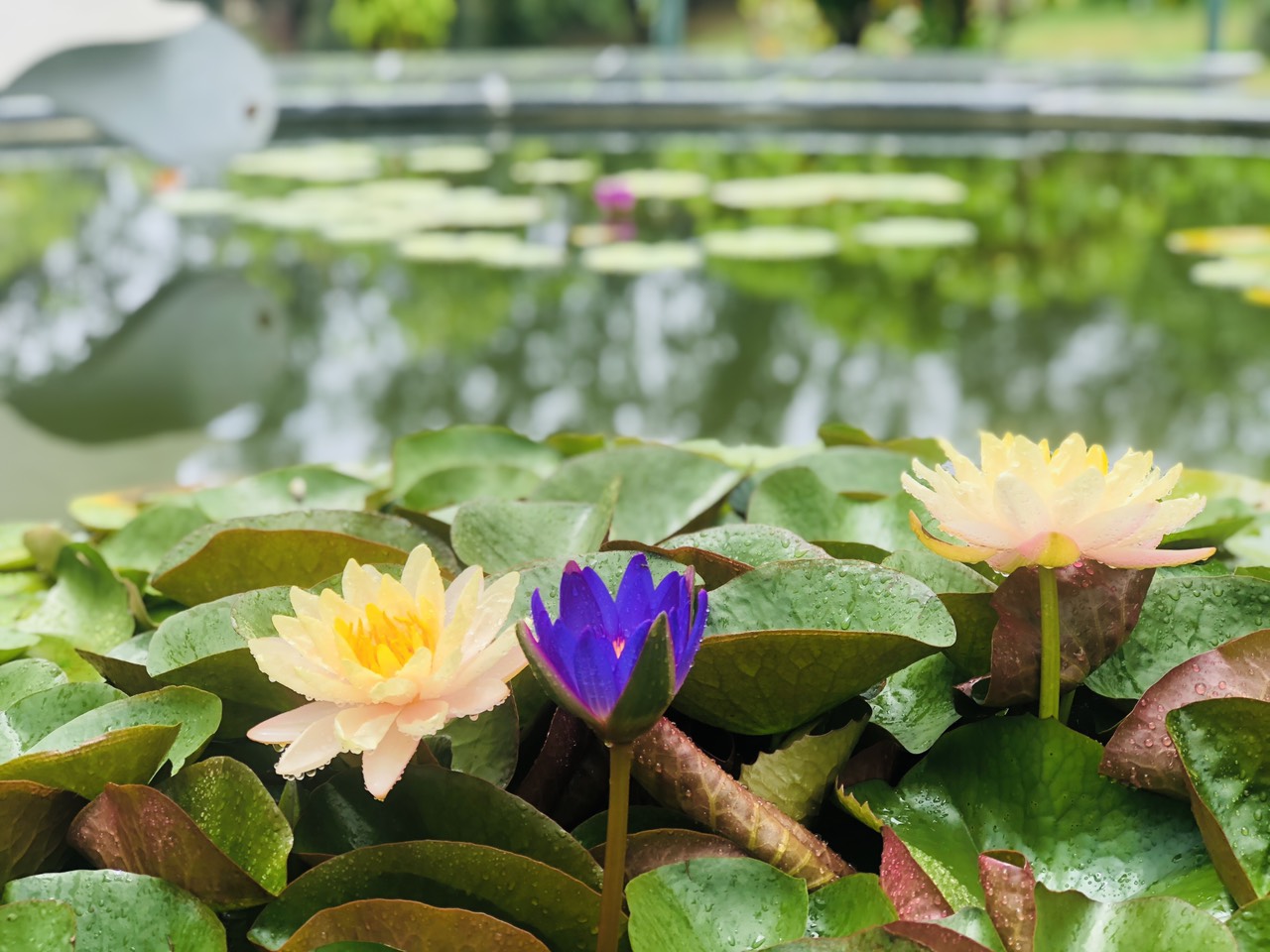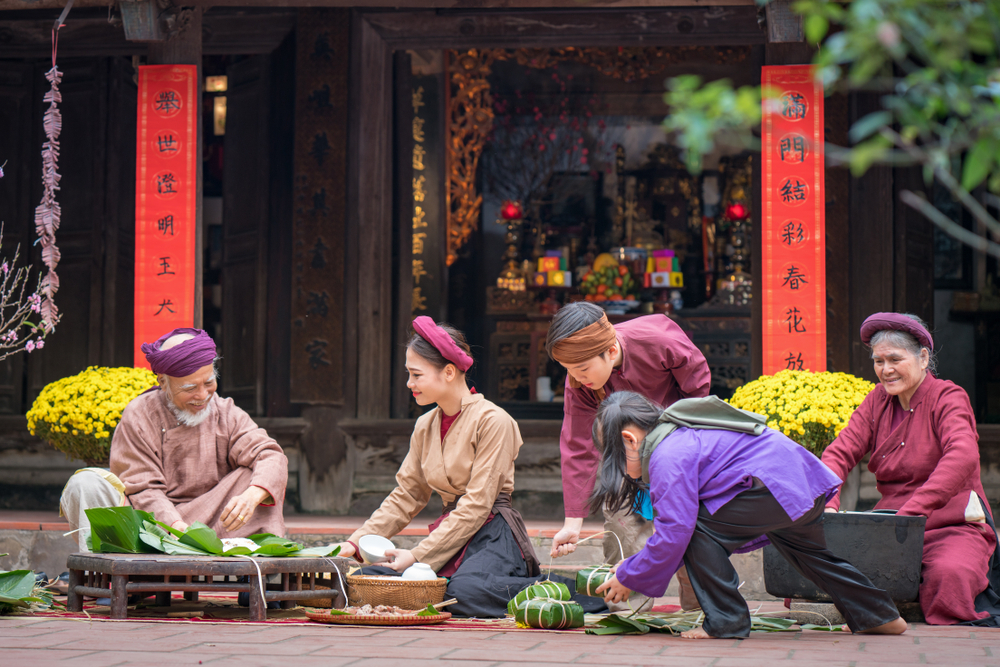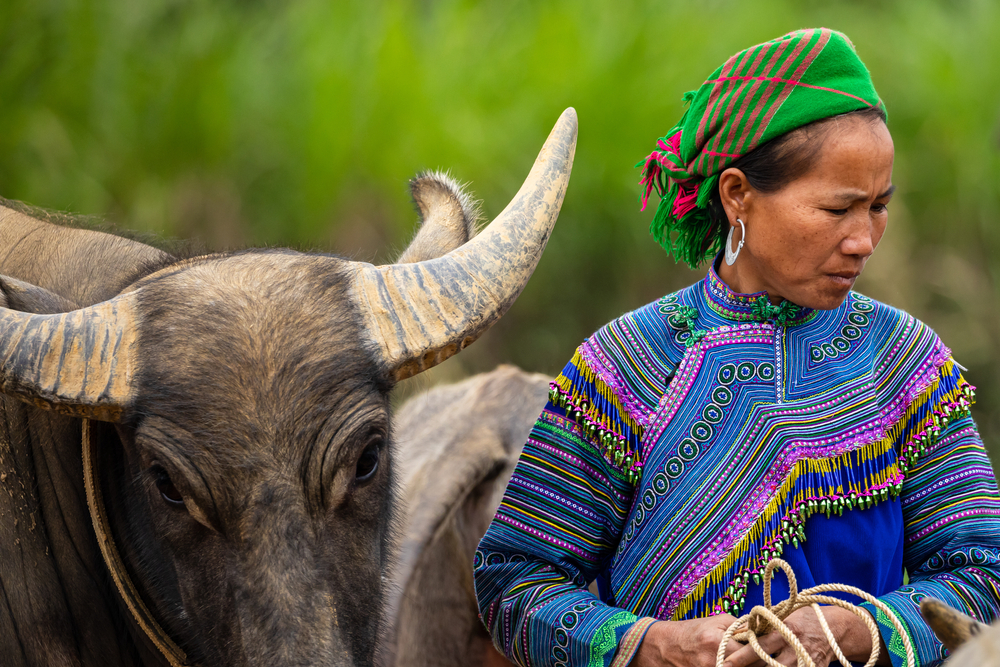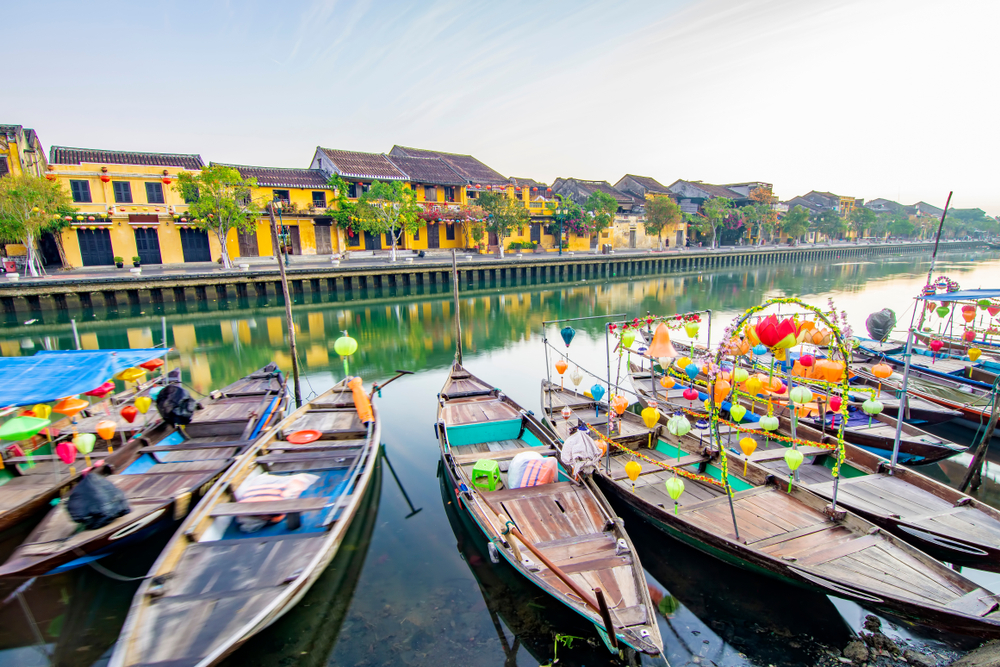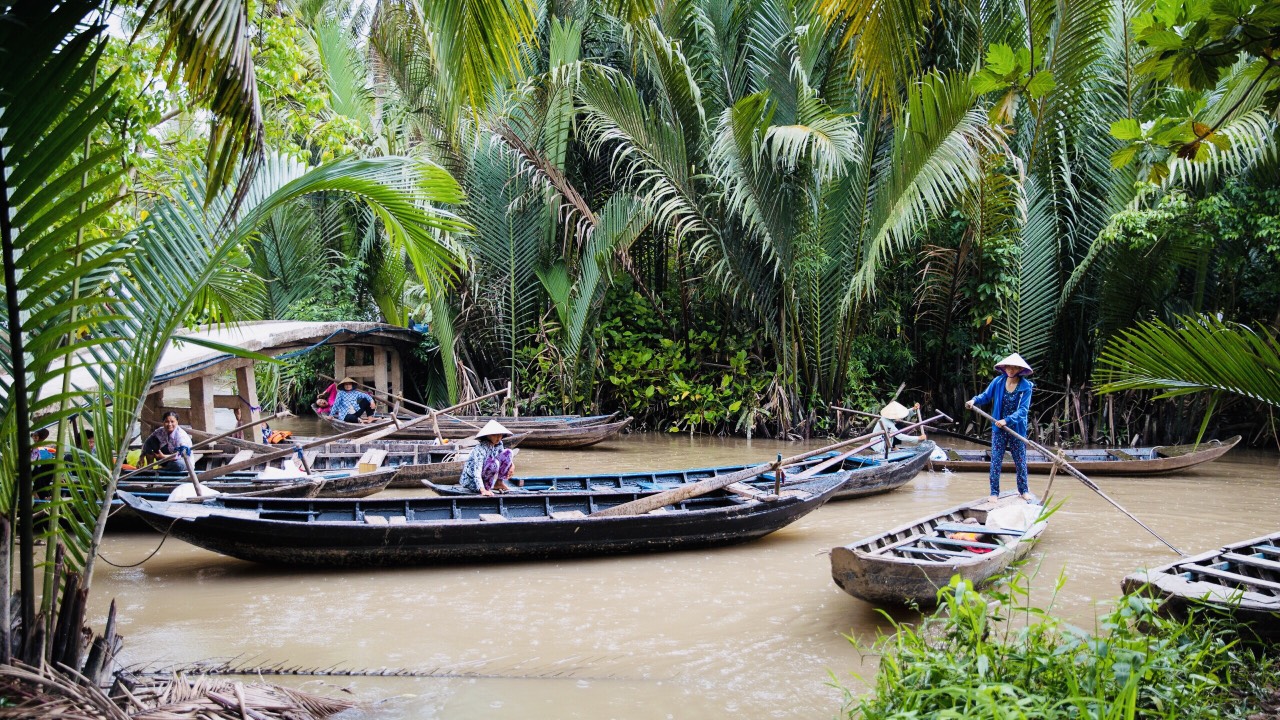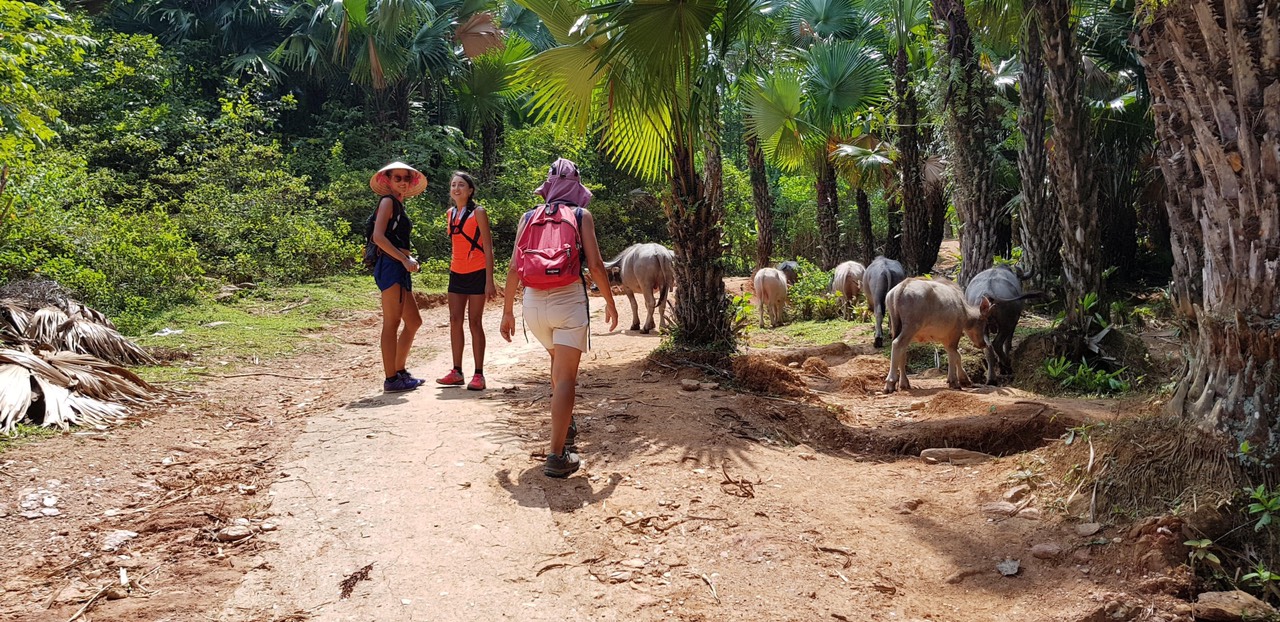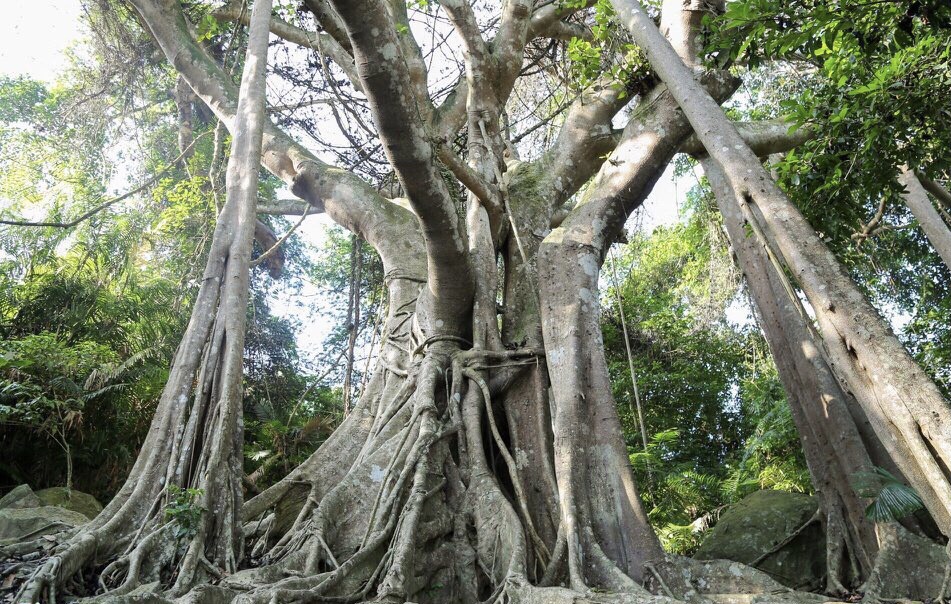
Going to the flower market is one of the old customs of the Vietnamese, especially on the occasion of Tet Nguyen Dan, the New Year, and for all other festive occasions, in order to put flowers in temples and pagodas, in the hotels of the ancestors or simply for the pleasure and the symbolism of each flower or plant.
Folk songs, tales and novels often refer to flowers, especially in love.
And without forgetting, the women, the young girls of the country, who very often carry names of flowers, one will not doubt the romanticism of the Vietnamese!
During the months, especially in the city and sometimes in the countryside:
January, peach blossoms – luck and happiness to families.
Synonymous with the upcoming arrival of spring, rebirth and prosperity, peach blossoms are essential to decorate people’s homes during the traditional Tet.
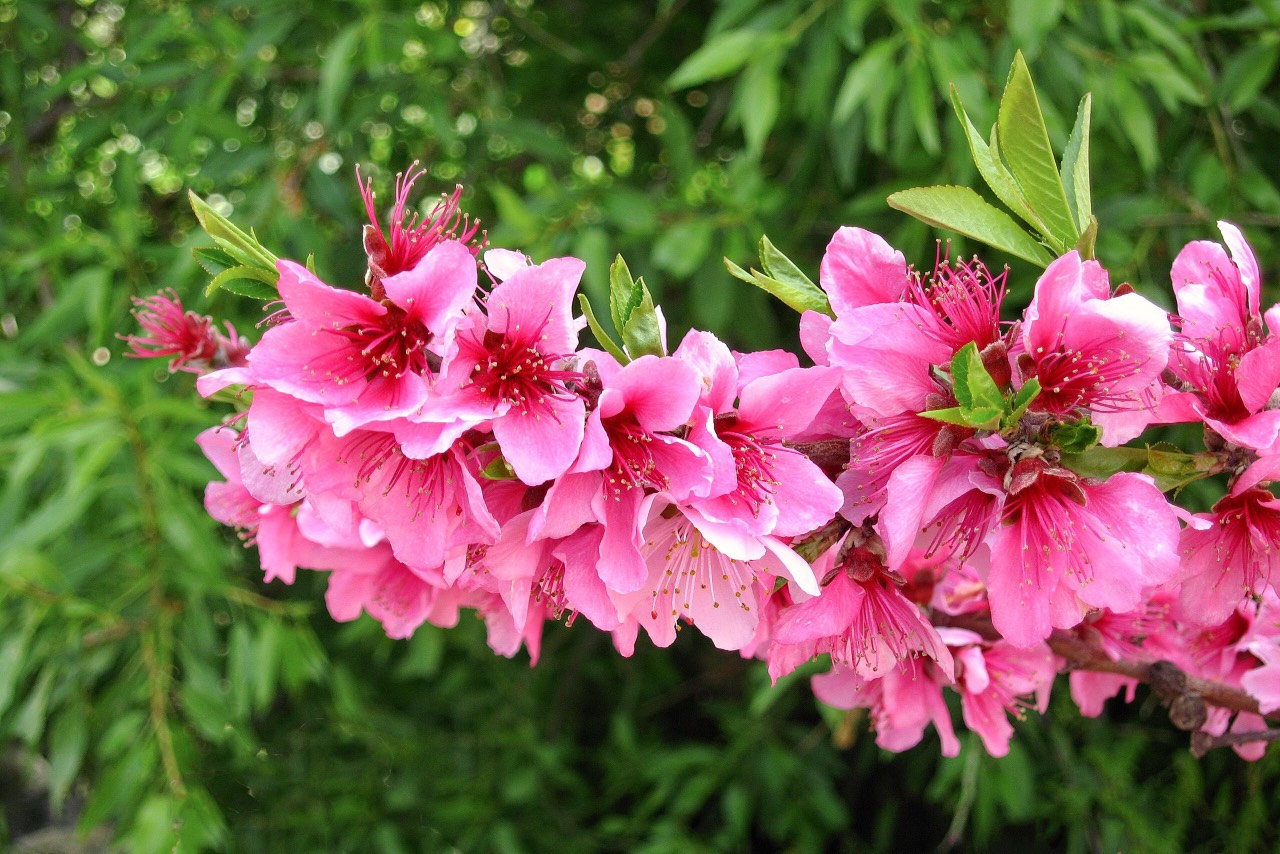
According to the legend, once upon a time, a demon ruled the world.
The Buddha had then helped the man to seize his territory.
To mark the border of this territory, peach branches were used. However, on New Year’s Eve, demons from the eastern sea came out to reach the land.
Therefore, peach branches were planted to remind these demons not to violate the territory of men, nor to disturb them.
It has the ability to fight against demons and drive away evil spirits. This is why at the time of Tet, the inhabitants put a peach tree in bloom in front of the house.
In Ha Giang, the aridity and rigor of the high plateau in winter give way in spring to the pink of peach trees that bloom in every corner of the villages.
The natives plant peach trees everywhere, along winding paths at the foot of rocks, through gardens and even in rice fields.
The peach trees in Han Giang are nothing like the ones grown in the plains.
Their flowers, which have five petals, are a light pink.
The Ban flowers of February – faithfulness in love.
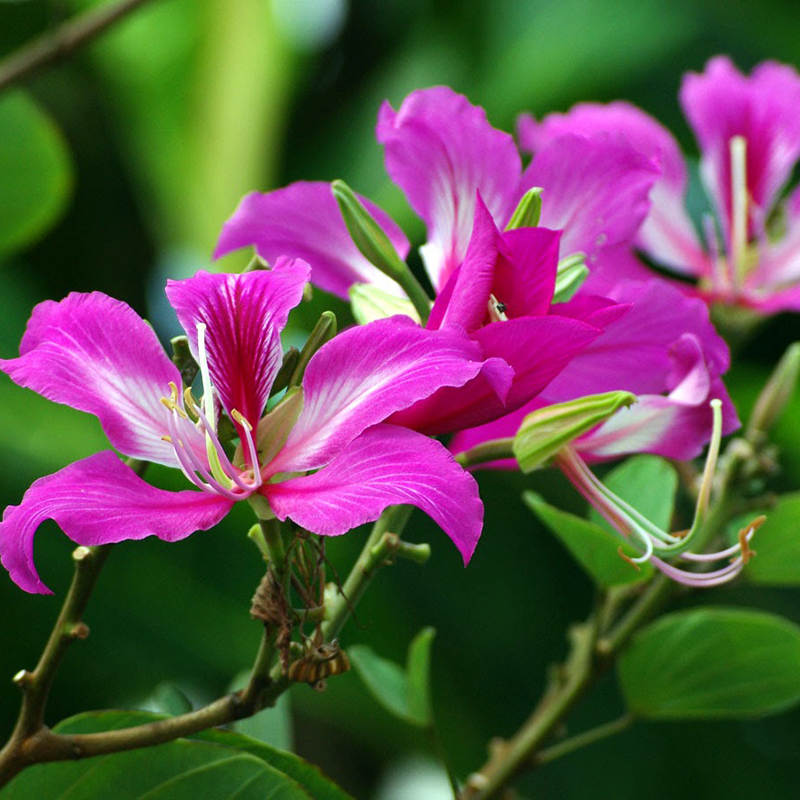
Ban flowers (bauhinia) are native to northwest Vietnam and come in three colors: purple, white and red.
They are attached to a story about the faithfulness in love of a couple of the Thai ethnic group.
For this ethnic group, the bauhinie is very useful.
The bark allows to preserve, to fix, the dye of the indigo fabric.
The flower and the leaf are used to cure coughs and sore throats. The inhabitants also gather the young leaves, the flowers and the grains to cook various dishes.
Xen Ban Xan Muong, is the prayer festival organized by the Thai to celebrate the flowering of the bauhinies
The villagers pray for abundant crops and good luck in the new year. They also wish for a peaceful and prosperous life.
Mars and Sua flowers – symbol of love.
In March, the “sua” flowers bloom in Hanoi’s botanical garden as well as in the streets of the historical district of Ba Dinh.
They cover bare branches, small white flowers, delicate, with a subtle perfume, which announce the arrival of beautiful sunny days.
Not to be confused with the majestic tree (Australian cinchona) which blooms in autumn.
In Tam Ky, Hoa Sua (here a tree) will be covered with golden yellow (it is close to the small island of Ly Son – there is a flight from Hanoi to Tam Ky…no more reason not to go there…!)
The Lilies of April – spring beauty.
It was with “Thiếu nữ bên hoa huệ”, young woman with tuberose, that the renowned painter Tô Ngọc Vân, honored the fleur de Lys as a message to the beauty of spring.
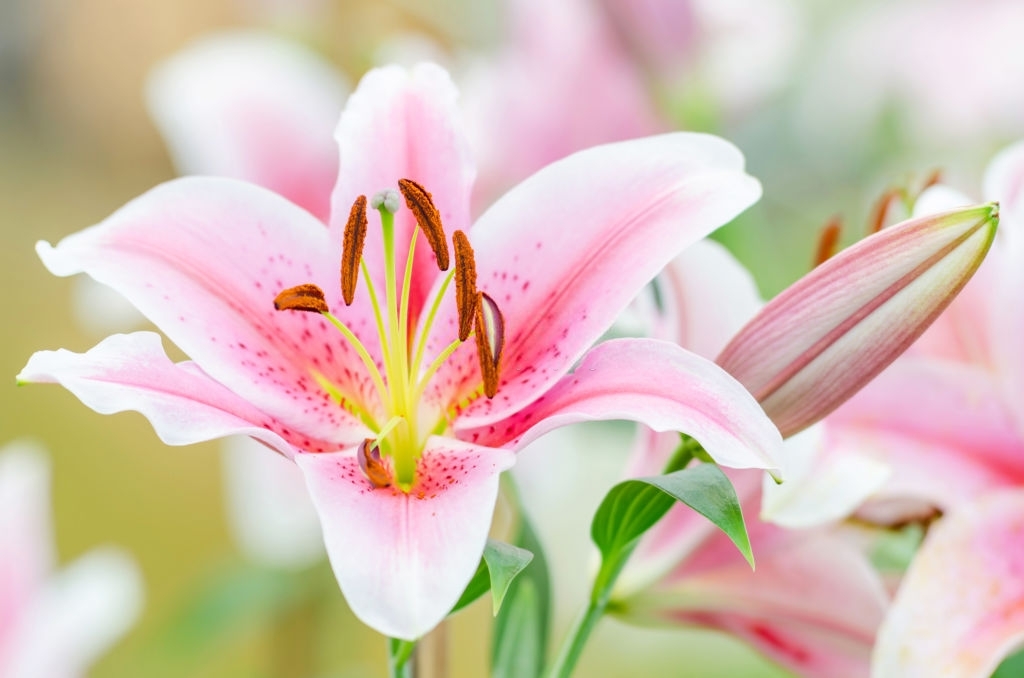
Hoa Huê in Vietnamese, (fleur de Lys), is written like the city of Huê but the latter is more specialized in the making of the finest conical hats.
May, red flamboyant (hoa phượng vỹ) – warmth of feeling and cheerfulness.
In Vietnam, in the late 19th century, flamboyant was introduced by the French to major cities such as Hai Phong, Da Nang and Saigon.
Currently, this plant has been widely planted from North to South on sidewalks, schools and parks.
Remarkable trees with a majestic bearing and blood-red flowers, they can be seen from as far away as the city around the Lake in Hanoi, but also in the countryside.
The red flowers are associated with the age of the students, the flowering season is also the end of the school year,
The purple flowers with falling petals in the shape of a bell symbolize fidelity and love.
June, Lotus – wisdom.
The Lotus..Vietnam’s emblematic flower, it is the flower of wisdom!
The lotus has strong symbols that the Vietnamese people can identify with and be proud of.
A symbol of purity and spiritual aspiration in Buddhism, a symbol of integrity and moral uplift in Confucianism which education has been steeped in for centuries; but also a symbol of beauty, simplicity and longevity,
The lotus particularly dear in the hearts of the Vietnamese is present in their lives.
This flower which has become the national flower of Vietnam, appears in traditional proverbs, literary works, religious objects, on ancient buildings etc.
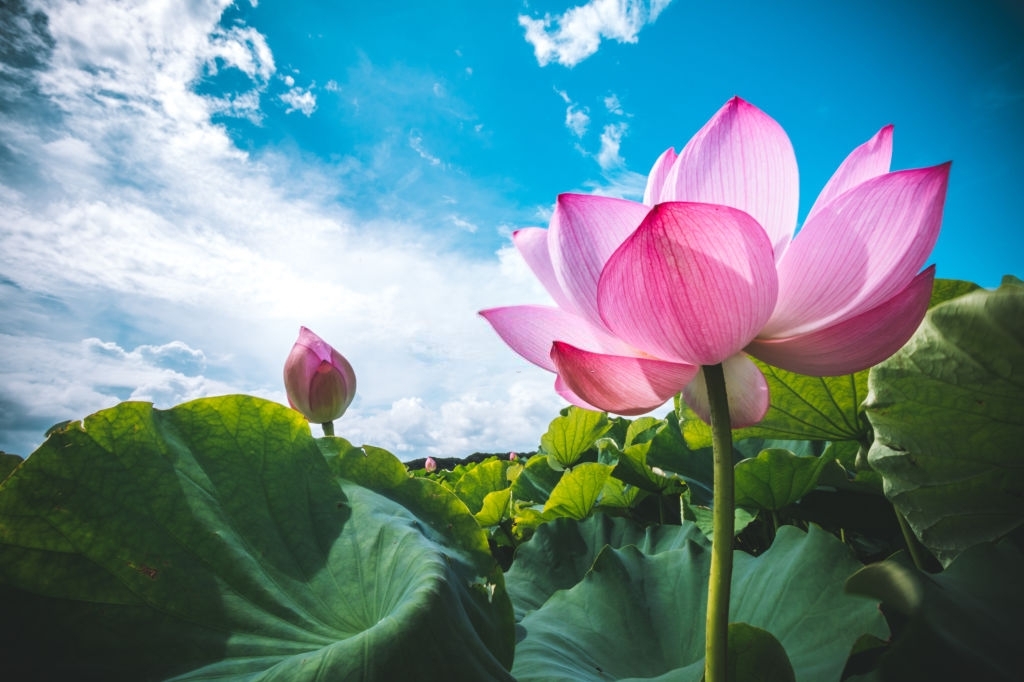
It is indispensable for special occasions.
It is distinguished from water lilies by its flower which blooms well above the water while that of the water lilies remains on the surface.
It takes root in the mud which it purifies by growing.
Darkness in the depths and clarity on the surface, invisible and visible, inside and outside.
A Vietnamese proverb says: “Growing in the mud, the lotus does not smell bad” (Gân bùn mà chang hôi tanh mùi bùn).
– Everything is edible in the lotus,
The mature leaves perfume rice and the flower stamens delicately scent tea leaves, the seeds are used in Asian cuisine and traditional medicine…
In the imperial era, it is said that young women used to travel by boat on the western lake to put tea in the heart of the lotus flower before it closed at nightfall.
At dawn, before the dew disappeared, when the flower opened again, they harvested the tea which had been impregnated with the subtle perfume of the lotus.
This tea has the beautiful name of Treasure of Heaven or Emperors’ tea because it was long reserved for the Emperors,
It is subtly perfumed and delicate in the mouth.
Sau flower in July
The “sau” tree is a typical species of Hanoi.
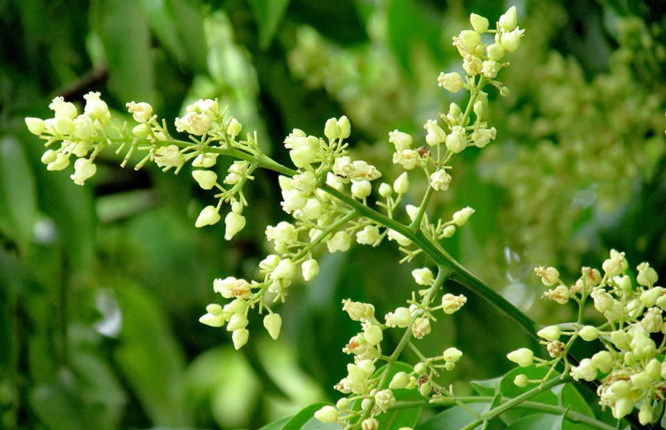
These tall trees dominate the avenues of Ba Dinh’s historic district, forming refreshing green domes during the summer.
After the sudden showers of July, the small white flowers “sau” cover the ground like snowflakes. Towards autumn, these trees give fruits with an acid taste.
Hanoians use these fruits to make one of their specialties: “sau” juice to cool down from the summer heat, or “O mai sau”, a kind of candied fruit, or “sau dam”, a fruit with a spicy-sour taste.
August, Dau Da Xoan flowers – remind us of childhood
The trees ” dau da xoan ” Clausena excavata Burm.
They are planted in the streets of the old quarter of Hanoi and give small yellow flowers in autumn.
The oil-rich seeds can be used to make soap, and the ripe fruits which have a sweet and sour taste can be eaten. It would also have certain curative powers.
Present from Ha Giang to Dak Lak, it is also cultivated in many other localities of the country.
The September – Sua flower (not to be confused with the March one) – alstonia scholaris.
The devil tree blooms between September and November, depending on the year.
It is a large tropical tree with small sprays of tiny ivory-colored flowers that hide high up in the foliage.
Its bloom is rather ephemeral, but its small flowers of a white tinged with green are extremely perfumed.
October and the white daisies – hoa cúc họa mi
Small daisies, chrysanthemums, simple, white, which grow in nature and are also cultivated.
This is the story of a mother of her son:
Because of too much work, partly because of her old age, the mother’s strength gradually weakened and confined her to bed in pain.
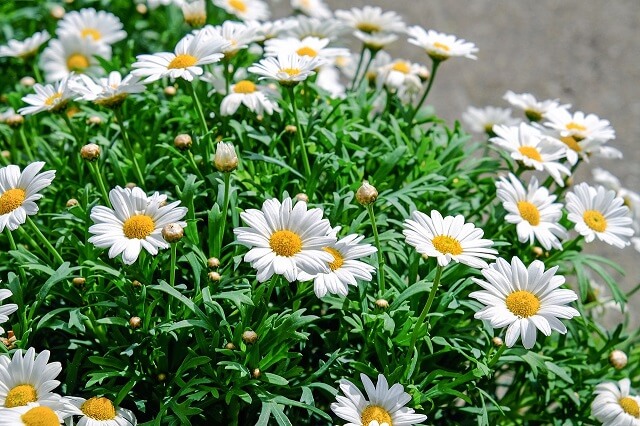
The medicines, not being able to cure her, her son had to go into the forest in search of the best medicines to cure his mother for days but without success
While he fell asleep in a forest, full of white and perfumed flowers,
A “Hoa Mi” kind of small Asian sparrow appeared and gave him a white daisy, with 5 flowers, the total number of petals was to tell him how many years his mother would live,
It was because of his filial piety and honesty that this young man was touched by the blue sky and was helped by the Buddha.
October, November, the fields of buckwheat flowers.
They have long been the beauty of the northern mountainous provinces!
The yield of this plant being less than that of corn or rice, the population did not expand this culture except in some places for the tourist needs…
Also, today, visitors can admire these flowers even in the suburbs of Hanoi.
In the districts of Ha Giang and Dong Van some communes celebrate the harvest, a festival exists recently (in October), it is very popular with Vietnamese and foreign tourists.
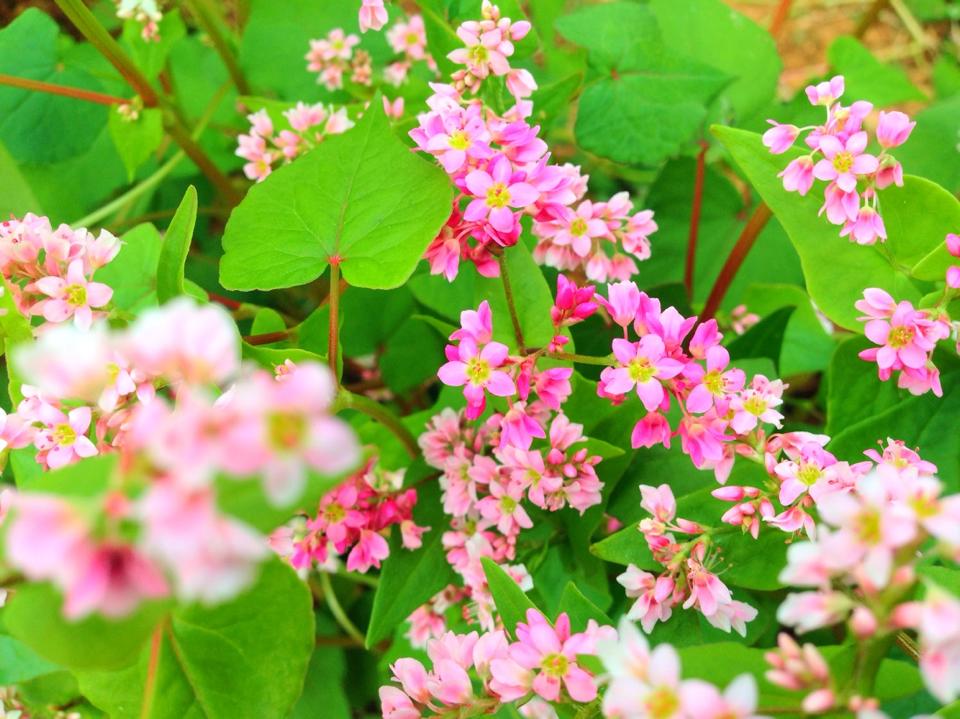
In the northern karst mountains of Hoang Su Phi, Ha Giang, Dong Van, Meo Vac and up to Cao Bang everywhere buckwheat flowers in autumn!
If the buckwheat flower is almost everywhere delicately pink, the one in Cao Bang will be more milky (it is not the same seed).
It will be sown in the fields of course but also on the rice terraces after the rice harvest.
It is said that in ancient times, a famine devastated the H’Mong villages. The natives went in search of food.
In the middle of the rocks, they discovered a small pinkish white flower, shaped like an inverted heart.
Its taste was as subtle as rice and corn.
This is how the famine would have ended.
Since then, the H’Mongs make buckwheat cakes and alcohol in the autumn after harvesting (with a scythe), and it is also used as animal feed.
Besides the 2/3 basic crops, rice, corn and formerly poppy, the Hmongs also cultivate other cereals such as buckwheat, millet and sorghum, of the first two they make delicious cakes the Banh tam giac mach for buckwheat,
You will find them on the markets, on the one in remote Sa Phin, near the palace of the Hmong kings for example. It is slightly sweet but a little bit stuffy, it’s hard to eat!
Once the grain is dried and ground, the flour is mixed with water to make thick patties that will first be steamed and then heated over the embers,
After harvesting, some of the grains are fermented to make alcohol (mixed with corn).
In these remote areas, people traditionally know how to make alcohol from ingredients with a high starch content such as glutinous rice, corn, cassava and buckwheat.
Glutinous rice, Gạo nếp is the most widely used ingredient in making rice alcohol, Ruou gao, because of its special fragrance and characteristic sweetness.





